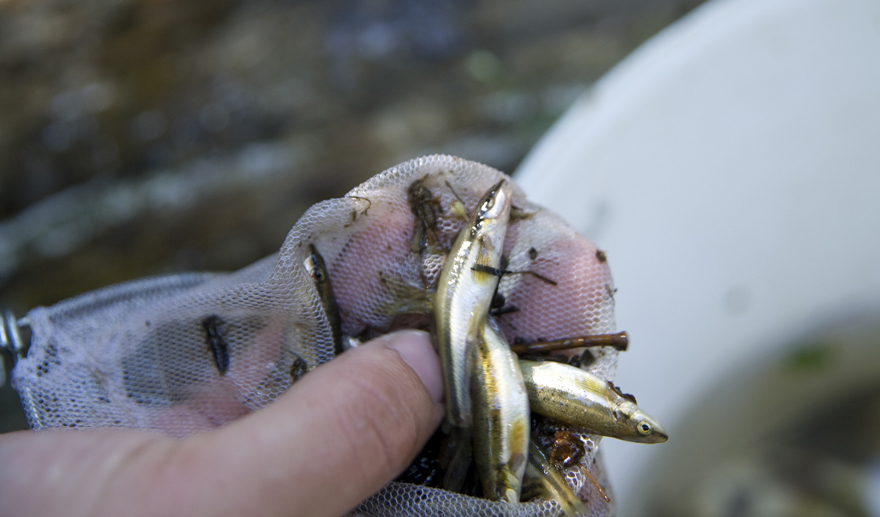
Ecology, conservation, and recovery of Maine native fishes in a changing environment
Native fishes of commercial, recreational, or ecological importance in Maine, such as Atlantic salmon, brook trout, alewife, and sea lamprey, have experienced range-wide decline because human activities have degraded freshwater habitats. Recently humans have sought to mitigate these negative impacts and restore native fisheries, especially for migratory species, by removing dams and restoring access to historic habitat. Both types of human impact can result in rapid changes to in-stream habitat, and it is vital to understand how native species respond and how their functional roles change so we can evaluate and adjust management objectives and actions accordingly. Much of Maine’s economy and cultural identity is based upon restoring native fish species and their habitats while also providing angling opportunities for citizens and tourists. Those citizens, groups, and communities in rural parts of the state whose livelihoods depend directly on aquatic resources stand to benefit from a better understanding and management of Maine’s native fisheries in the face of a rapidly-changing environment. My target audience overlaps with those currently involved in or affected by dam removal projects such as the Penobscot River Restoration Project and the Sedgeunkedunk Stream Restoration Project: state and federal agencies, nongovernmental organizations, the Penobscot Indian Nation, local communities, academia, and citizens with interest in the status of Maine’s fisheries. Anticipated outcomes from my overall research program would be a change in management or policy objectives or actions that reflect my findings. For example objective #1 listed above, anticipated outcomes could be a change in stocking procedures or locations for Atlantic salmon fry, or identification of highest-priority watersheds for conserving and protecting native salmon and trout in light of climate change and smallmouth bass invasion. This might also impact dam removal decisions, in that small dams that block the upstream expansion of smallmouth bass into high-quality brook trout habitat might better be left standing and removal efforts focused elsewhere For example objective #2, an anticipated outcome could be increased public support and efforts to remove other dams in Maine and elsewhere. Both the Penobscot River Restoration Project and the Sedgeunkedunk Stream Restoration Project already are serving as model restoration projects around the state and nation, in part to the rigorous quantification of effects on fish assemblages not seen in most other dam removal projects. For example objective #3, an anticipated outcome could be changes in management focus and actions to include species like sea lamprey. If results show that sea lamprey are a beneficial component of native fish assemblages, managers might consider dam removal or fishway construction at sites that otherwise would not be high priority (e.g., streams that don’t contain Atlantic salmon).
Investigators: Coghlan, S.; Zydlewski, J.
Unit: Wildlife, Fisheries, and Conservation Biology
Termination Date: 30-Sep-17
